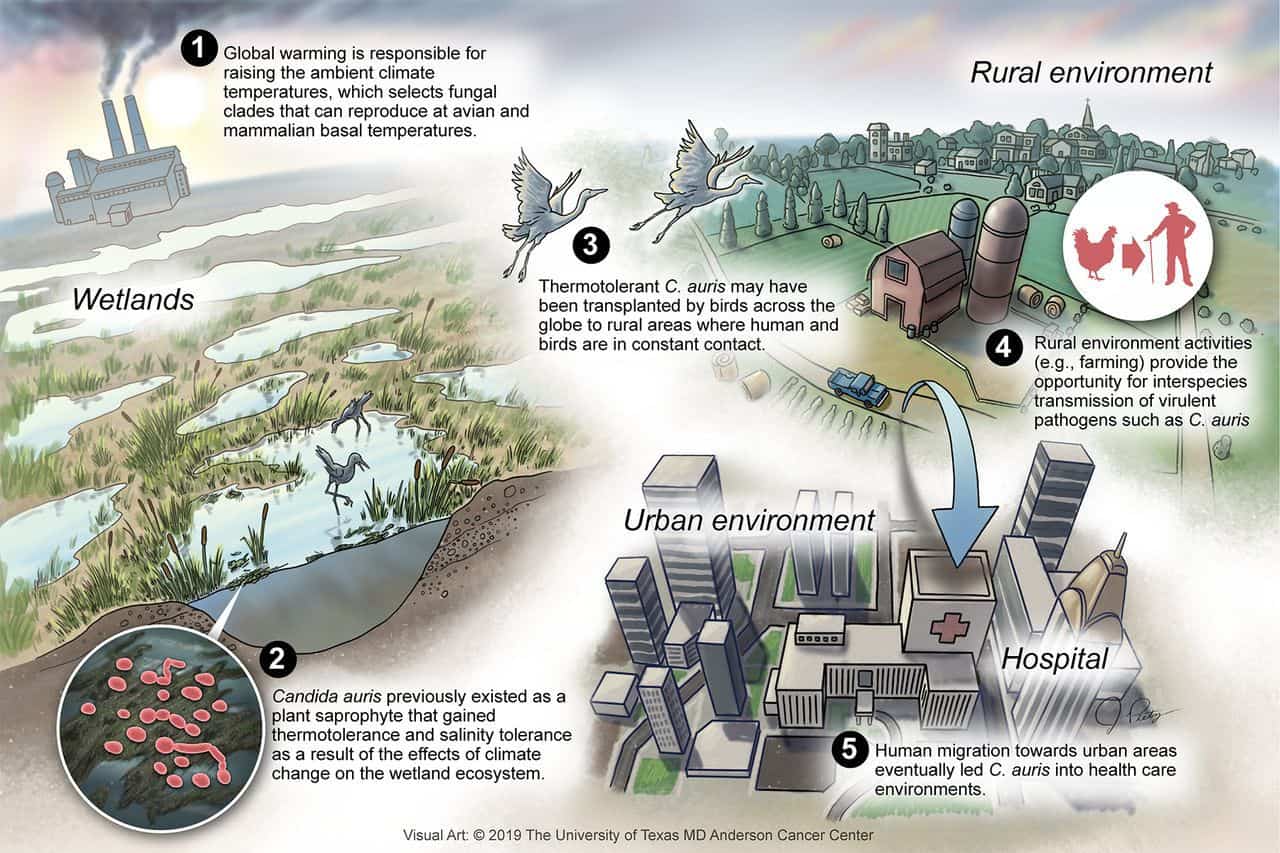In sweltering swamps, you seethe
And sweat.
Shedding layers to
Acclimatise to the rising heat,
Learning to bask in the warmth
Of its embrace as you spread
Invasive tendrils to test the
Boundaries of your habitat.
Your colonies have not entered
Our consciousness.
Hiding behind the certainty of
Our thermal restriction zones,
We isolate you from the ear canal
Of a 70-year-old Japanese woman,
Where having grown resistant to the
Profligacy of our heat,
You sneer with contempt at our
Lame attempts to subdue your
Yeasty taint with latent medicine.
Piles of pills lie half-opened,
Scattered across freshly mopped
Hospital corridors that gleam
In the radiance of their inadequacies.
Within the clammy crevices
You watch admiringly as we
Turn up the heat;
An open invitation from your
Clement, conscientious hosts.

This poem is inspired by recent research, which has found that global warming may have played a pivotal role in the emergence of Candida auris, a fungus which can cause candidiasis in humans.
Candida auris is a new drug-resistant fungal species that was first isolated in 2009. It is one of the few Candida species of fungus that can cause candidiasis in humans, and has also been shown to display multiple drug resistance. The fact that incidents of infection have occurred simultaneously across three separate continents (Asia, South America, and Africa) indicates that the overuse of antifungal drugs is unlikely to be the sole reason for why this fungus has recently emerged as a human pathogen (i.e. a microorganism that causes disease in humans). This has led researchers to speculate that this might be the first fungal disease to emerge because of climate change.
One of the reasons that fungal infections are so rare in humans is because of the mammalian thermal restriction zone, i.e. most of the fungi in the environment cannot grow in the relatively high body temperatures of humans (and other mammals). However, in this study researchers found that Candida auris is capable of growing at higher temperatures than most of its closely related species, likely because it has evolved to adapt to the effects of global warming. This study suggests that this is only the beginning of fungi adapting to higher temperatures, with global warming likely leading to the evolution of fungal species that are more thermally tolerant, such that they can breach the mammalian thermal restriction zone.
An audio version of this poem can be heard here: